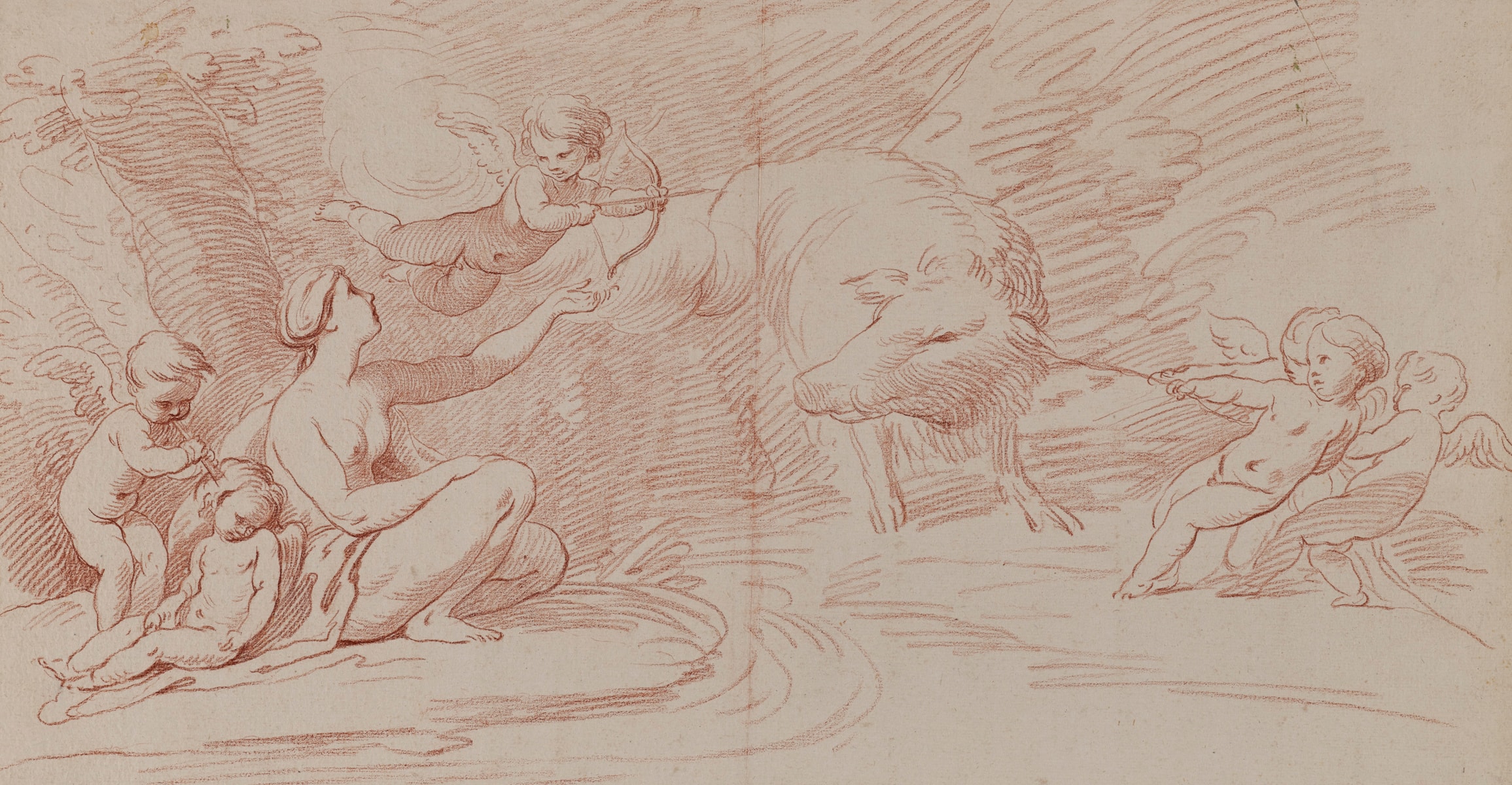
Edmé Bouchardon (Chaumont-en-Bassigny 1698 - Paris 1762)
Putti and a nymph playing with a boar
Provenance:
Comte d'Angiviller, Charles Claude Flahaut de la Billarderie (1730–1809), Paris
by descent
with Galerie Cailleux, Paris (label on the verso)
Private collection, Paris
Christie’s, London: 11 December 1990, Lot 79
Christie’s, New York: 28 January 1999, Lot 122
Private collection, UK
Literature
Stéphane Melchior-Durand, 'Les dessins mythologiques de Bouchardon et le réforme du goût sous Louis XV', in Paris, Capitale des Arts sous Louis XV, Bordeaux, 1997, p. 117, fig. 84.
Note:
This drawing illustrates an episode from the Roman poet Ovid's Metamorphoses (Book XIV). The drawing is replete with the poet’s playful humour and subtle hints of eroticism, a topos which mythological themes allowed Bouchardon and his contemporaries to explore. The confident and at times spare handling of the red chalk is typical of the sculptor-draughtsman Bouchardon, who was described by Charles-Nicolas Cochin as “le meilleur dessinateur de son siècle”. In Ovid’s narrative, Picus, the son of Saturn and king of Ausonia, went riding in the Laurentine countryside in search of wild boar to hunt. The magician Circe saw him and desired him as a lover. Unable to attract his attention, she created the apparition of a wild boar, making him cross the road before Picus’ eyes and plunge into a thick wood. Picus set off in pursuit of what he believed to be his prey but became lost in the forest. There, Circe attempted to seduce him, but Picus resisted the sorceress's attentions, who, furious, transformed him into a woodpecker.
According to Baron Portalis, Bouchardon produced fifty drawings illustrating Ovid’s Metamorphoses which were engraved by the Comte de Caylus, himself the author of comic and libertine tales. These drawings were in the collection of Gilbert Paignon-Dijonval (1708-1792). In 1810 Paignon-Dijonval’s collection was published posthumously by Pierre Maurice Bénard and his drawings were acquired en bloc by the British dealer Samuel Woodburn. The present drawing is likely related to the commission.
